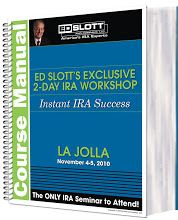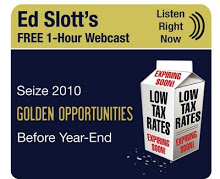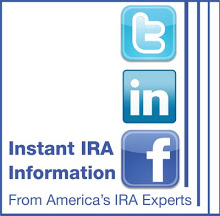We have written in this column many times about the benefits of a Roth IRA conversion. Commencing in 2010 the income limit has been repealed, making it possible for everyone owning a traditional IRA to convert it into a Roth IRA. Participants and beneficiaries with account balances in employer-sponsored retirement plans, such as 401(k)s and 403(b)s, can also convert those funds provided they are eligible to receive a distribution.
While this rule change was hailed by many in the press as a great thing, plenty of taxpayers remain skeptical. Consumers and practitioners are concerned about the possibility of Congress changing the rules at a future point, taking away some of the benefits of conversion. Without a crystal ball, however, it is impossible to know with any degree of certainty if something like that would ever happen.
One of the benefits of Roth IRAs is that no distributions are required to be made during the account owner’s lifetime. Also, provided certain conditions are met, withdrawals from a Roth IRA will be free of federal (and most state) income tax, regardless of whether it is paid to the original account owner or an inheriting beneficiary. The upfront payment of income tax at the time of conversion eliminates the imposition of income tax on the back end. However, a penalty tax could apply if the converted funds are withdrawn from the Roth too soon (i.e. within 5 years of the year of conversion if the account owner has not yet attained age 59 ½).
In an attempt to generate a high level of conversion activity in 2010, Congress is allowing taxpayers to choose whether to include the taxable amount of a 2010 conversion all in 2010 or prorate it evenly in 2011 and 2012. Some folks feel the 2-year option is best because it reduces the amount included in income annually, but others feel the 1-year option is the more prudent approach because of the guaranteed certainty of higher income tax rates after 2010.
And what we do know is that income tax rates are going up. This should be no surprise to anyone, considering the epic amount of debt and deficits with which Congress is grappling. The President has repeatedly called for higher taxes for top earners. A 3.8% Medicare surtax on high earner’s investment income is on tap for 2013. In 2011 the top tax rates are increasing: income tax from 35% to 39.6%, short term capital gains from 35% to 39.6%, long term capital gains from 15% to 20%, interest income from 35% to 39.6%, and qualifying dividend income from 15% to 39.6%. All of these tax increases bode well for converting in 2010 and paying the income tax in 2010. Of course, if you know your income will be significantly lower in 2011 & 2012 you might want to wait to add conversion-related income in those years.
In the short-term, the government is benefiting by the flood of Roth IRA conversions this year because the conversion amount is added to income in 2010 or 2011 & 2012. It will not have to wait until that individual attains age 70 ½ to begin collecting revenue.
Because there are no guarantees, individuals who remain unconvinced that the Roth IRA regulations will not change may want to consider making partial Roth conversions instead of one large one.
In the end, every IRA investor’s situation is different and no individual should make important financial decisions without first consulting with his or her tax and financial advisor.
By IRA Technical Consultant Marvin Rotenberg and Jared Trexler
------------------------------------------------------------------------------
Comment, Question, Discussion Topic on your mind? Click on the Blue Comment Link below and leave your thoughts then check back to see what other consumers and advisors think.
*Copyright 2010 Ed Slott and Company, LLC
Monday, August 16, 2010
Are Roth Conversions Too Good To Be True?
Subscribe to:
Post Comments (Atom)
















1 comments:
All that stats I read about the abysmal savings rate prompts me to ask - how many people are really at risk of being in a higher bracket at retirement, even with a bit of upward creep in marginal rates.
In today's dollars it would take assets of over $2M to create a withdrawal (at 4%/yr) that would put one in the top of the 15% bracket.
I believe Roth has its place, deposits when young and in a lower bracket, and ongoing conversions to "top off" one's bracket each year.
The real shame would be for one to retire with no taxable income and miss the chance to take income each year at the zero rate (the combined STD deduction plus exemptions).
Post a Comment